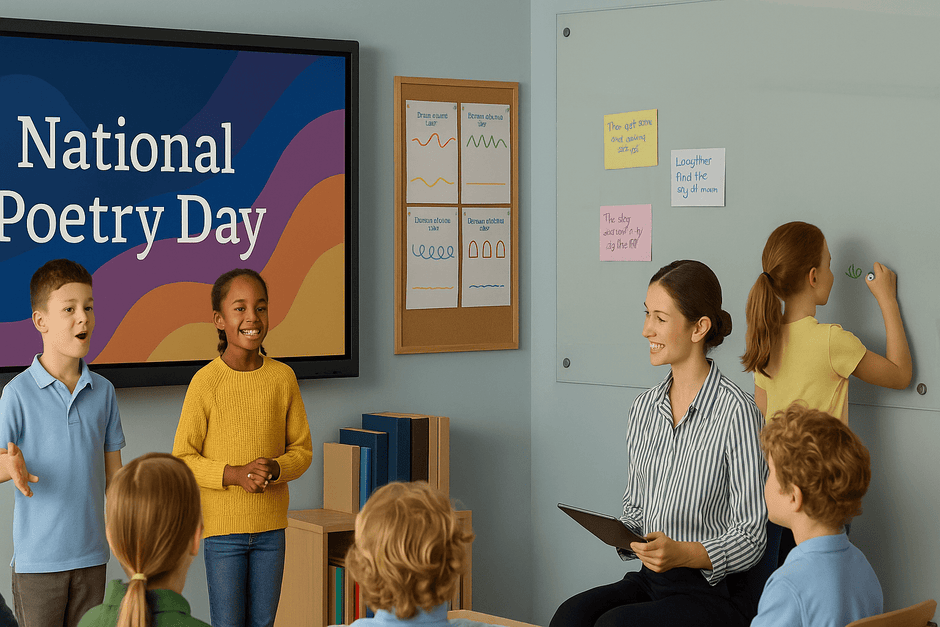In today's dynamic educational landscape, the challenge of managing classroom noise has become increasingly significant.
Excessive noise can severely impact students' ability to concentrate, process information, and engage effectively in learning activities. As educators and administrators, it's crucial to address this issue to create an environment conducive to academic success and overall well-being. This article explores practical strategies to reduce classroom noise, drawing from the latest research and expert insights.
At Presentation Spaces, we understand the importance of acoustic comfort in educational settings. Our range of innovative acoustic panel solutions is designed to tackle noise issues effectively, enhancing the learning experience for both students and teachers. As you read through these strategies, consider how our tailored acoustic solutions could benefit your educational space.
Understanding the Impact of Classroom Noise
Before delving into solutions, it's essential to grasp the full extent of how noise affects the learning environment. Recent studies have shown that excessive classroom noise can lead to:
15 Key Action Points to Reduce Classroom Noise
1- Implement Acoustic Treatments
Investing in high-quality acoustic panels can significantly reduce reverberation and absorb excess noise. Our Presentation Spaces acoustic solutions are specifically designed to address the unique acoustic challenges of educational environments. From wall panels to ceiling baffles, we offer a range of options to suit various classroom layouts and aesthetic preferences.
2- Optimise Classroom Layout
Arrange furniture and learning areas to minimise sound travel. Create designated quiet zones and collaborative spaces to manage noise levels effectively.
3- Establish Clear Noise Guidelines
Develop and consistently enforce a set of classroom noise rules. Involve students in creating these guidelines to promote ownership and compliance.
4- Utilise Visual Noise Monitors
Implement visual noise level indicators, such as traffic light systems or digital displays, to help students self-regulate their volume.
5- Incorporate Silent Signals
Use nonverbal cues, such as hand signals or light indicators, to manage classroom noise and avoid adding to the noise when trying to quiet the class.
6- Introduce Noise-Reducing Materials
Incorporate soft furnishings like rugs, curtains, and cushions to absorb sound. Our acoustic panels can be customised to blend seamlessly with your classroom décor while providing superior noise reduction.
7- Implement Mindfulness and Relaxation Techniques
Teach and practice mindfulness exercises to help students become more aware of their noise levels and develop self-regulation skills.
8- Use Technology Wisely
Employ noise-cancelling headphones for individual work and consider sound-field systems to enhance teacher voice projection without increasing overall noise levels.
9- Create Transition Routines
Develop quiet routines for transitions between activities to minimise disruptive noise during these often chaotic periods.
10- Encourage Collaborative Learning Strategies
Implement structured group work techniques that promote quiet collaboration, such as think-pair-share or silent brainstorming sessions.
11- Provide Professional Development for Teachers
Offer training on effective classroom management techniques specifically focused on noise reduction strategies.
12- Address External Noise Sources
Work with school administrators to mitigate external noise sources, such as playground noise or traffic. Our acoustic solutions can be applied to windows and doors to reduce noise infiltration from outside.
13- Implement a Reward System
Create a positive reinforcement system to encourage quiet behaviour, celebrating classes or individuals who consistently maintain appropriate noise levels.
14- Use Background Music Strategically
Introduce low-volume, instrumental background music during independent work times to create a calming atmosphere and mask disruptive noises.
15- Regular Acoustic Assessments
Conduct periodic evaluations of classroom acoustics to identify areas for improvement and measure the effectiveness of implemented strategies. At Presentation Spaces, we offer free acoustic assessments to help you pinpoint your specific noise challenges and recommend tailored solutions.
Implementing Acoustic Solutions: The Presentation Spaces Approach
At Presentation Spaces, we specialise in creating bespoke acoustic environments that enhance learning and teaching experiences. Our process involves:
- Comprehensive Acoustic Assessment: We thoroughly evaluate your space and identify specific noise issues and acoustic challenges.
- Customised Solution Design: We design a tailored acoustic treatment plan incorporating our range of high-performance acoustic panels and solutions based on our assessment.
- Professional Installation: Our expert team ensures seamless installation, minimising disruption to your educational activities.
- Post-Installation Support: We provide ongoing support and advice to help you maintain optimal classroom acoustic conditions.
Our acoustic panels not only reduce noise but also offer aesthetic benefits. They come in a wide range of colours and designs to complement your classroom's visual appeal. We have solutions for every educational environment, from sound-absorbing wall art to discreet ceiling treatments.
Summary
Reducing classroom noise is a multifaceted challenge that requires a comprehensive approach. By implementing these 15 key strategies and considering professional acoustic solutions, educators can create an environment that fosters concentration, enhances learning outcomes, and promotes overall well-being for students and teachers.
The benefits of a quieter classroom extend beyond immediate noise reduction. They include improved academic performance, reduced stress levels, enhanced teacher job satisfaction, and a more positive learning experience. Addressing classroom noise effectively paves the way for more engaged, focused, and successful students.
Choose Presentation Spaces to improve your acoustics
We have an extensive selection of acoustic products and sound-absorbing panels, perfect for creating spaces unobstructed from noise pollution. Don't let excessive noise hinder your students' learning potential.
Contact Presentation Spaces for a free acoustic assessment and quote to create an optimal acoustic environment in your classroom. Our expert team will work with you to develop a customised solution that addresses your specific noise challenges and enhances your learning space.
Call us on 01382 913 913 or email us at info@presentationspaces.co.uk with an enquiry, and we’ll get back to you as soon as possible.









